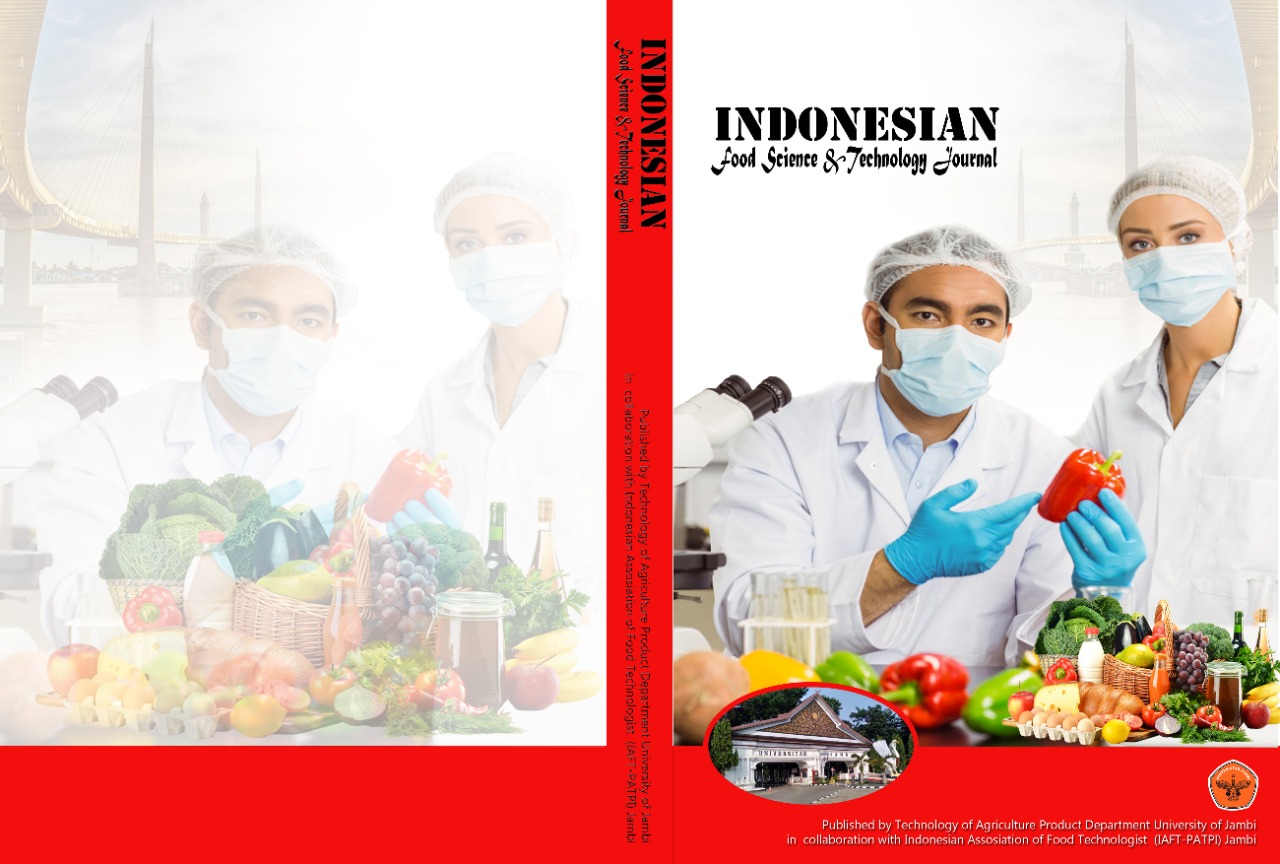Differences in Sanitary Hygiene Behavior and Bacterial Identification in Minimizing Pathogenic Bacteria in Food Handlers
DOI:
https://doi.org/10.22437/ifstj.v7i2.32124Keywords:
Counseling, Hygiene and Sanitation, Bacterial Pathogens, Food HandlersAbstract
Food as a biological substance with the potential to cause foodborne illness. According to Indonesian Food and Drug Supervisory Agency (BPOM), more than 20 million incidents of poisoning occur in Indonesia each year. The objective of this study is to examine the impact of hygiene and sanitation counseling on the behavior of food handlers, as well as to conduct microbiological examinations on the palms of food handlers. The method in this study uses quasi-experimental research, using a one-group pretest and posttest experimental design, and sampling was accomplished by unintentional sampling pretest and posttest. As a result, 17 out of 20 (85%) traditional food handlers carry pathogenic bacterial species such as Escherichia coli (65.3%), Staphylococcus aureus (23.5%), and Klebsiella spp (10.2%), but after treatment, the number of traditional food handlers carrying bacterial species pathogens decreased to 6 out of 20 (30%). The Mann-Whitney U test revealed that there was a significant influence on changes in the behavior of food handlers before and after receiving counseling regarding hygiene and sanitation behavior in handling food, which is 0.000 smaller than 0.05. Swabs were also used on the hands. With the Kolmogorov-Smirnov Z test, food handlers have a significant shift in the bacterial organisms identified on their hands before and after counseling, which is 0.000, smaller than 0.05.
Downloads
Downloads
Published
How to Cite
Issue
Section
License
Copyright (c) 2024 Indonesian Food Science and Technology Journal

This work is licensed under a Creative Commons Attribution 4.0 International License.








